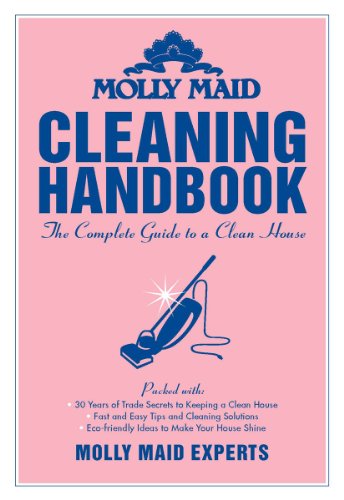
With the Christmas season around the corner, we need all the help we can get to keep on top of household chores. The professional cleaning experts at MOLLY MAID, share some top tips to ensure that your trusted appliances don’t let you down before the heavy Christmas work-out.
Washing Machine
We use our washing machines to remove the grime and odours – so the last thing we want is for the washing machine itself to start smelling. Try some of the below tips:
Run a service wash
Most people wash their clothes at 40°C or less. This is a great way to save money on energy bills and is better for the environment, but there is a down side. Washing at these temperatures will not completely rid your washing machine of mould and bacteria. Instead, you need to run a service wash to deal with this problem.
A service wash means spinning the machine without any clothes in at a high temperature. Ideally done once a month, most manufacturers now recommend you use a certain cycle to do this or provide a special drum-cleaning program. Your instruction manual should have this information.
Turn off your machine
The next steps require you to perform some maintenance on the machine. So before starting, turn off your washing machine and then unplug it.
Clean the seal, drawer and filter
Mould and bacteria can fester in the rubber seal around the door. After washing, have a look at the seal to see if it needs a scrub – doing this regularly can help prevent the build-up of mould and bacteria. If mould has had too long to fester, it may have sunk into the porous rubber of the seal and be impossible to remove. If this happens, you may want to replace the door seal. Mould and bacteria also have a tendency to build up in the detergent drawer and lint filter.
Leave the door and drawer open
Leaving the machine’s door ajar after washing allows air to circulate in the drum and helps prevent the growth of mould and bacteria. You should also leave your machine’s detergent drawer partly open for the same reason.
Check the stand pipe
If bad smells continue, you may have a partial blockage in the standpipe. If you suspect this is the case, use a drain unblocker to try and clear the pipe.
Many top manufacturers recommend pouring 2 cups of white vinegar in the empty drum of the machine (nothing else in it) and put it on a full cycle at the highest temperature it will go to. What this does is removes all the lime scale build-up, and any soap scum that is still in the machine or pipes.
Tumble Dryer
Tumble dryers can often suffer from musty smells and can quickly ruin a fresh-smelling clean load of laundry. MOLLY MAID recommends going through the following checklist to locate the source of the problem:
- Remove the dryer vent and vacuum out any debris or lint that may have become trapped.
- Check the area where the vent attaches to the dryer as well as the vent that connects to the outdoors if not using a condenser dryer.
- Lint that becomes trapped in these vents can stay damp and hold the musty smell. As the dryer is running, the odour is pushed back into the laundry.
- If the load is too large, it may be taking too long to dry. As the laundry sits in the warm air, the damp clothing creates the perfect environment for the musty smell.
- Have your water checked. If your water is hard or has sulphur in it, it can lead to odours in the laundry. While the smells may be mild when wet, some minerals smell much stronger after being heated and “cooked” by the dryer. A water softener or filtration system may help.
Dishwasher
Tracking down dishwasher odours can be annoying and frustrating. There are many causes of foul odours in your dishwasher, but finding and eliminating the cause of the odours requires a series of troubleshooting steps and a little patience.
- Clean the drain filter. Remove the bottom rack, then remove and clean the filter. Wipe the filter housing with a damp cloth.
- Look for food particles on the door gasket and the surfaces of the door that meet with the gasket. Wipe the gasket and the door surfaces with a damp cloth. Also wipe the door seal inside the dishwasher at the bottom of the door.
- Make sure there is no water pooled in the bottom of the dishwasher. This is typically the result of turning off the dishwasher before it finished its cycle the last time it was run. If you see standing water in the bottom of the dishwasher, run a “rinse and hold” cycle. Check the drain hose for obstructions if there is still water in the bottom of the dishwasher after running it through a full cycle.
- Do not leave dirty dishes in the dishwasher for long periods. Run a “rinse and hold” cycle if you are not going to turn the dishwasher on straight away.
- Run the dishwasher through a regular wash cycle and, after the first rinse, open the dishwasher and place a 30 ml cup of white vinegar on the top rack. Then let the dishwasher complete the wash cycle.
Good Luck!

